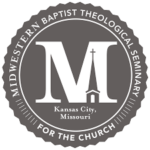“When the fullness of time had come, God sent forth his Son” (Gal. 4:4), and now we are living at “the end of the ages” (1 Cor. 10:11; cf. Rom. 13:11). Jesus opened his ministry by “proclaiming the gospel of God, and saying, ‘The time is fulfilled, and the kingdom of God is at hand; repent and believe in the gospel’ ” (Mark 1:15). Isaiah anticipated the good news of God’s end-times reign through his royal servant and anointed conqueror (Isa. 40:9–11; 52:7–10; 61:1–3), and Jesus saw his own ministry realizing it. His kingdom message continued after his resurrection (Acts 1:3) and was shaped by the testimony that to faithfully “understand the Scriptures” means that we will see the Old Testament forecasting the Messiah’s death and resurrection and his mission to save the nations: “Thus it is written, that the Christ should suffer and on the third day rise from the dead, and that repentance for the forgiveness of sins should be proclaimed in his name to all nations, beginning from Jerusalem” (Luke 24:45–47; cf. Acts 1:3, 8; 3:18, 24; 10:43).[1]
Paul, too, believed the Old Testament announced God’s kingdom in Christ and the church he would build (Acts 26:22–23; cf. 20:25; 28:23).
The apostle proclaimed “the gospel of God . . . concerning his Son,” and he recognized that God “promised [it] beforehand through his prophets in the holy Scriptures” (Rom. 1:1–3; cf. Gal. 3:8). The Old Testament first anticipated, foreshadowed, and foretold the good news that we now enjoy—that the reigning God would eternally save and satisfy sinners who believe through Christ’s life, death, and resurrection (cf. John 1:45; 5:39, 46; 8:56; Heb. 11:13; 1 Pet. 1:10–11). The progress from creation to the fall to redemption to consummation is in a very real sense his-story, and it is this kingdom program that provides the framework for exalting Christ in the Old Testament.
Christ Is Central to God’s Creative and Salvation-Historical Purposes
Salvation history is the progressive unfolding of God’s redemptive purposes disclosed from Genesis to Revelation, all of which grow out of and culminate in God’s commitment to glorify himself in Christ. Scripture progresses through five distinct but overlapping covenants and through various peoples, events, and institutions, all of which culminate in Jesus’s person and work. Indeed, all God’s purposes in space and time begin and end with Christ. We thus read,
By [the Son] all things were created, in heaven and on earth, visible and invisible. . . . All things were created through and for him. And he is before all things, and in him all things hold together. And he is the head of the body, the church. He is the beginning, the firstborn from the dead, that in everything he might be preeminent. (Col. 1:16–18)
Furthermore, we learn that “the mystery of [God’s] will” is “according to his purpose, which he set forth in Christ as a plan for the fullness of time, to unite all things in him, things in heaven and things on earth” (Eph. 1:9–10). God’s creative and salvation-historical purposes climax in Christ.
The Old Testament’s laws, history, prophecy, and wisdom point to Jesus (Matt. 5:17–18; Mark 1:15; Acts 3:18; 1 Cor. 1:23–24), and the entire storyline pivots on him. He thus declared, “The Law and the Prophets were until John; since then the good news of the kingdom of God is preached” (Luke 16:16). Paul, too, noted, “For Christ is the end of the law for righteousness to everyone who believes” (Rom. 10:4). “The law was our guardian until Christ came. . . . But now that faith has come, we are no longer under a guardian” (Gal. 3:24–26; cf. Heb. 8:6, 13). “All the promises of God find their Yes in him” (2 Cor. 1:20).
By disclosing Christ as the Old Testament’s goal, the Father also illuminates his intent for the earlier parts. And in turn, those earlier parts then clarify the meaning of Jesus’s person and work. In Christ, all the problems the Old Testament raises find their solution (Eph. 1:10; Col. 1:20), and all that the Old Testament anticipates is fully and finally realized. In Christ, shadow gives rise to substance (Col. 2:16–17), types move to antitype (e.g., Rom. 5:14; 1 Cor. 10:6, 11), and what God promised he now fulfills (Luke 24:44; 2 Cor. 1:20). In Christ, light triumphs over darkness (Matt. 4:15–16; 2 Cor. 4:6). The new creation, new age, and new covenant overcome the old creation, old age, and old covenant.
The flow of God’s saving purposes in history demands that Christian Old Testament interpretation starts and ends with Christ. He is the hub around which all else turns and the measure upon which all else is weighed. As the means and focus of God’s self-revelation through his Scriptures, the divine Son must operate as the heart of all exegesis and theology. Because Jesus stands at the beginning and end of all God’s creative and redemptive purposes, we must interpret the Old Testament through Christ and for Christ.
Content taken from Delighting in the Old Testament by Jason S. DeRouchie, ©2024. Used by permission of Crossway, a publishing ministry of Good News Publishers, crossway.org.
[1] On the central role of these verses for the theology of Luke-Acts, see Brian J. Tabb, After Emmaus: How the Church Fulfills the Mission of Christ (Wheaton, IL: Crossway, 2021).
This post originally appeared at FTC.co.






